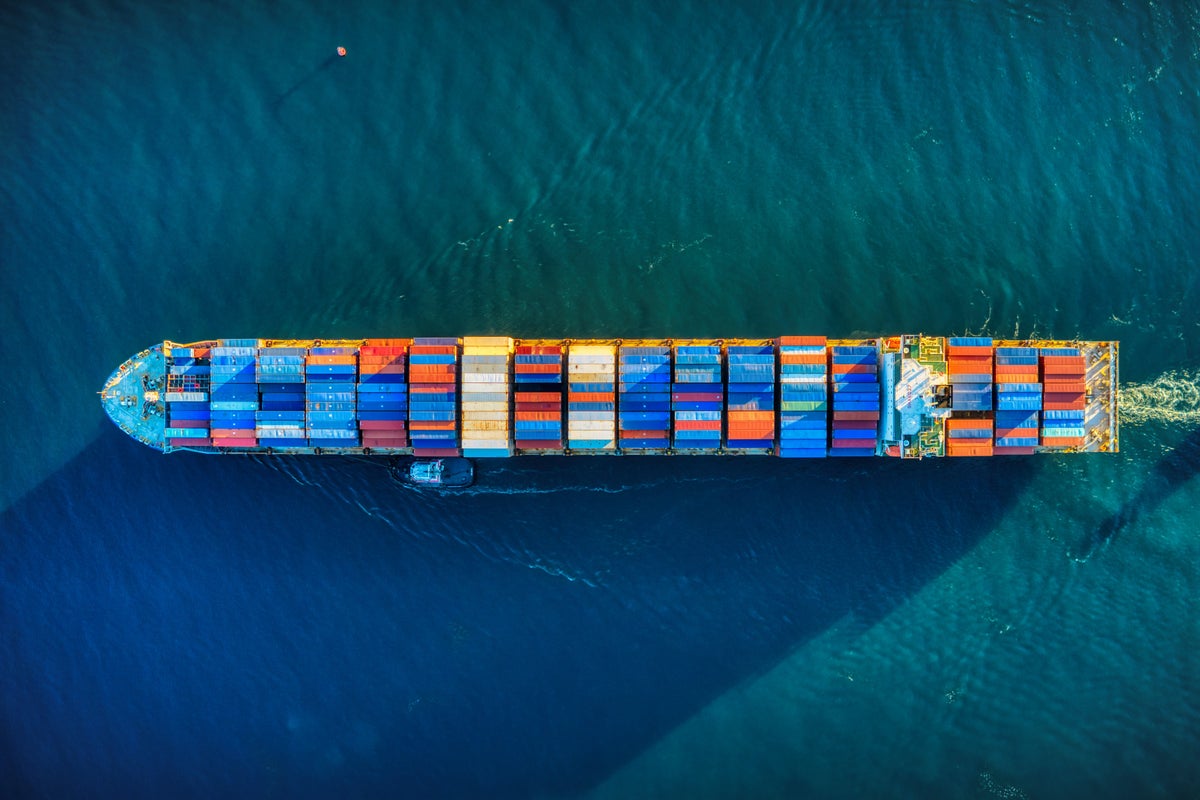[ad_1]
The supply chain crisis was one of the most salient economic events of the pandemic.
However, future supply chain stress is nonexistent, according to Liz Sonders, Chief Investment Strategist at Charles Schwab Corporation SCHW, citing the Kansas City Fed November index.
With the outlook for supplier delivery times crashing to its lowest on record, that leaves us to ask — when will inflation come down?
Read also: New Bull Market Won’t Start Until This Indicator Stops Falling, Says Prominent Analyst
Future supply chain stress nonexistent per November @KansasCityFed Index … outlook for supplier delivery times has crashed to lowest on record pic.twitter.com/zE73ZXfmEJ
— Liz Ann Sonders (@LizAnnSonders) November 18, 2022
Looking back, we are left to wonder how we got to this point.
Today’s high inflation indicates a limited supply of products and a high demand for many of the same goods. The energy and food industries, both directly affected by the conflict between Russia and Ukraine, are the most prominent instances of restricted supplies
However, inflationary pressures started before then.
Pandemic Woes
As the Covid-19 pandemic began to spread in 2020, world trade essentially came to a stop.
Many companies were compelled to close in order to stop the virus’s spread, with the exception of those judged to provide “essential” services by policymakers.
A number of governments launched emergency measures, such as giving consumers and businesses financial assistance to help them deal with pandemic-related economic difficulties.
These policies helped consumers put money toward things like vehicles, gym equipment, and home renovation projects rather than services and leisure activities (i.e., eating out, going to health clubs, and traveling).
An increase in demand outpaced supply in some sectors of the economy.
Production was hampered by pandemic-related business delays, which resulted in a shortage of popular commodities. As a result, supply chain problems started to emerge in the early phases of this surge and the effects on inflation started to become evident in early 2021.
Since then, it has gotten worse. The Federal Reserve has been aggressively cooling demand by hiking short-term interest rates, among other measures.
It’s working — according to the latest inflation data issued by the BLS, Commodities less food and energy commodities (this includes apparel, new and used vehicles, alcohol and smoking products) fell -0.4% on a seasonally adjusted basis, with the steepest falls in new and used cars, and apparel.
Expert Predictions
By the end of 2023, the core PCE index — a significant indicator of inflation — may fall to 2.9%, according to analysts at Goldman Sachs Group Inc GS.
According to Preston Caldwell, head of U.S. economics at Morningstar Research Services, certain product categories, such as vehicles and energy, have been the main causes of inflation in recent years.
He anticipates that the pressures on those industries — such as the lack of semiconductors and the supply-chain problems and disruptions brought on by the conflict in Ukraine — will lessen.
Caldwell says that the normalization of inflation and rising interest rates are beginning to return to normal levels.
“Fed tightening will cool off the overall economy substantially in 2023 and 2024, extinguishing the inflationary fire before it spreads to the broader economy,” he said.
Read next: Divided Congress Will Likely Perk Up Inflationary Pressure – Gold Bull Peter Schiff Weighs In
Photo by Venti Views on Unsplash
[ad_2]
Image and article originally from www.benzinga.com. Read the original article here.

